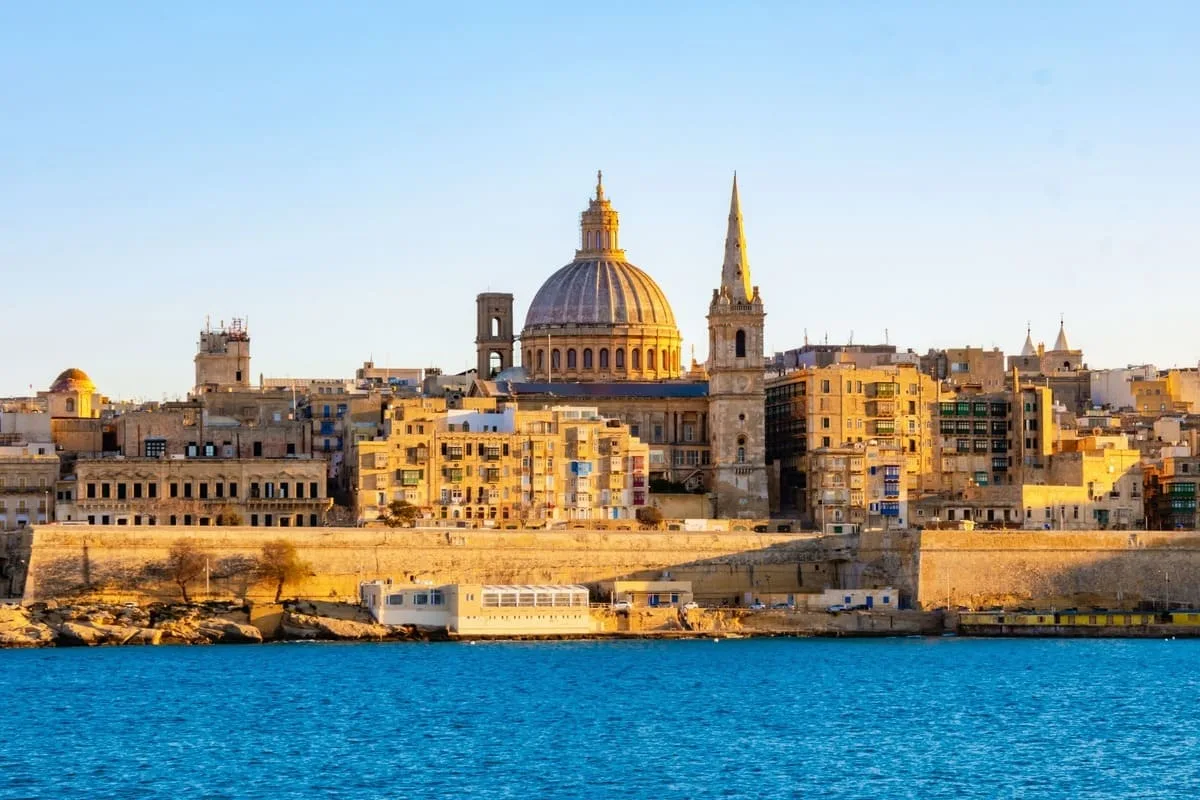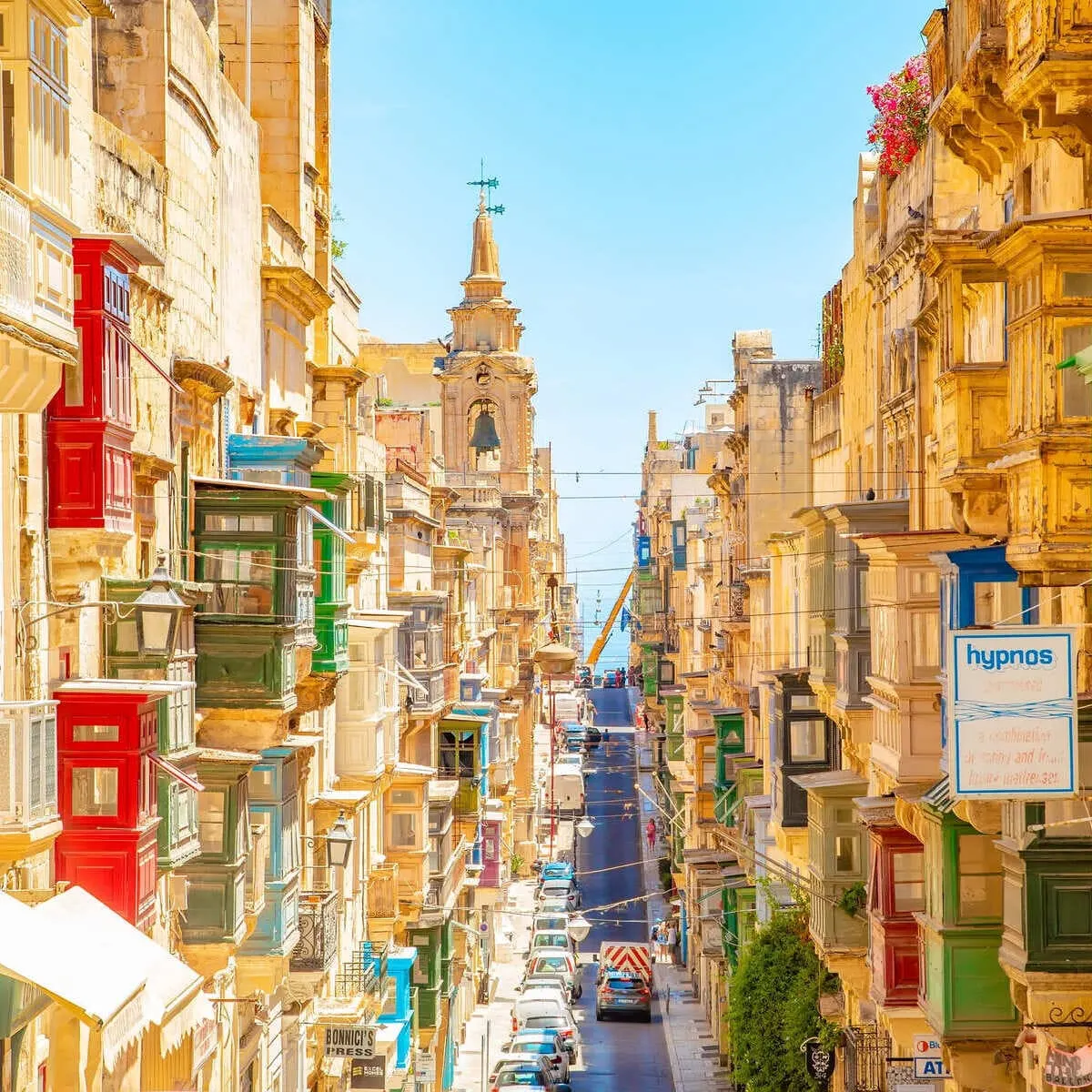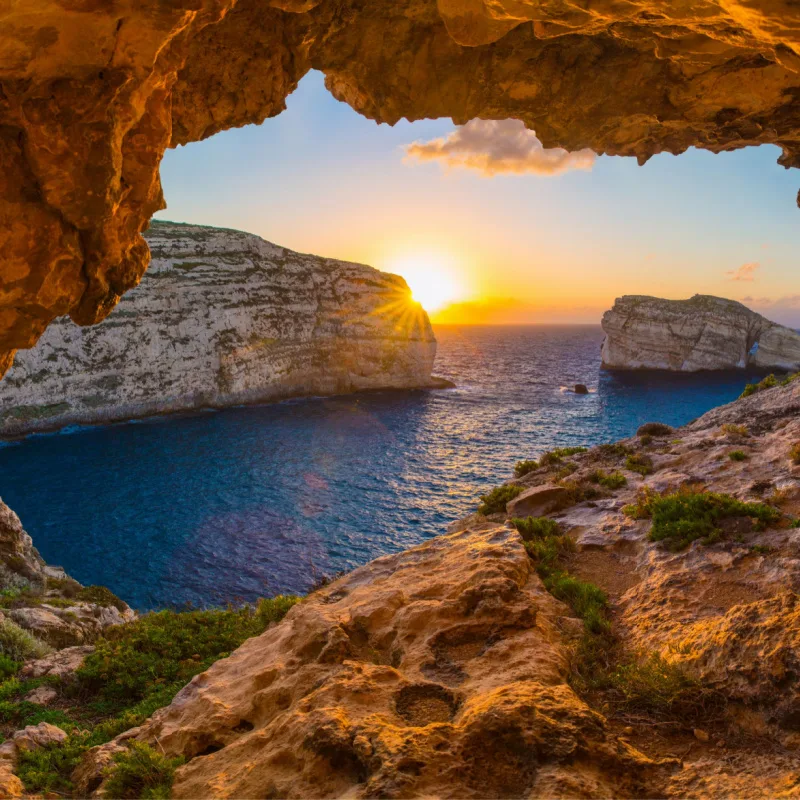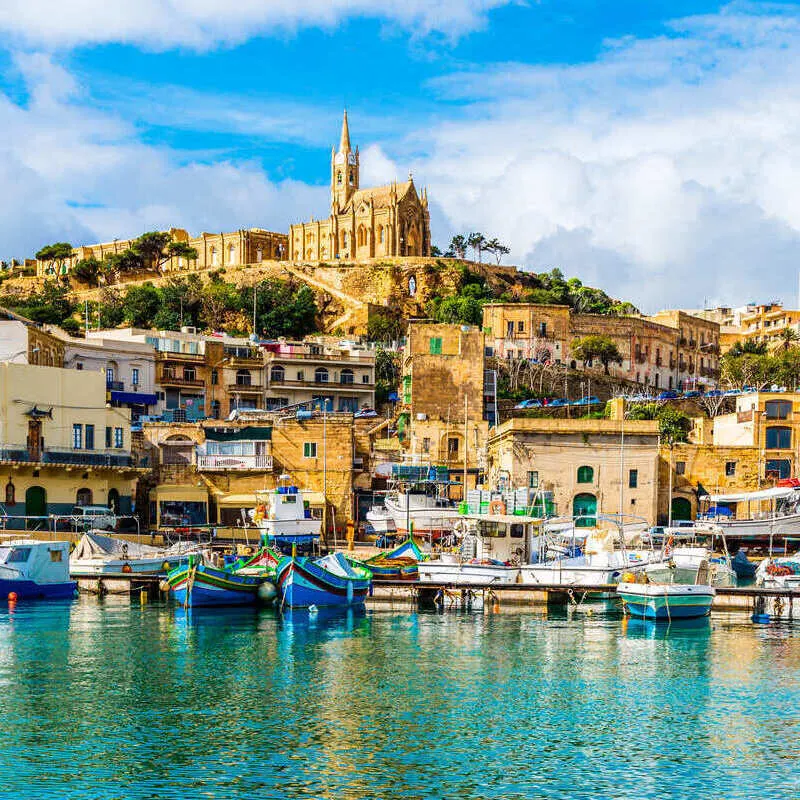As much as the traditional media would have you believe, Mediterranean vacays are not only about living la dolce vita in Italy, island-hopping around Greece, or impersonating Brigitte Bardot as you cruise down the French Riviera in a vintage peugeot.
We're Travel Off Path, a travel news website known for going deeper than surface level, and uncovering places off-the-beaten-track most tourists are yet to go, and in our book, Maltese summers can be just as idyllic:
According to the Times of Malta, tourism in the lesser-known Mediterranean nation has risen by almost 11% in June, and it doesn't look like it's slowing down anytime soon:
Americans Have Been Sleeping On Malta For Far Too Long

Though it's not the average American's first pick when planning a trip across the pond, Malta is one of Europe's hottest destinations, both literally and figuratively, boasting 80–89°F temps in summer, beautiful historic towns that look frozen in time, and turquoise seas.
Oh, and in case you've never heard of Malta before—which wouldn't be surprising, mind you—it's among the smallest states in the world.
Comprising 3 main islands, the largest of which being only 95 square miles in size, Malta is a collection of tiny dots in the Mediterranean Sea, somewhere south of Sicily (the trendiest island in Italy), and the coast of North Africa.
Despite its less-than-impressive size, and equally-small population of around 545,405 people, Malta has a rich history spanning several millennia, with the material (and immaterial) cultural heritage to back it up, and that's precisely what makes it so fascinating:
A UNESCO Listed Capital

The gemstone in Malta's crown, its capital La Valletta is distinguished both for being a UNESCO World Heritage Site, in recognition of the well-preserved coastal fortifications and Baroque architecture, and the smallest capital in the European Union by area.
It is about 0.24 square miles in size, with a population of 6,000 residents within its city walls. Despite its compactness, it's cultural value cannot be stressed enough:
In the heart of the old city, St. John's Co-Cathedral is a lavish cathedral built in the 1570s, featuring elaborate, gold-clad chapels and beautiful frescoes—and to the art buffs out there, this is where you'll find Caravaggio's now-iconic Beheading of St. John the Baptist.
Only a few steps from the Co-Cathedral, the Grandmaster's Palace was built by the legendary Knights of St. John, and a simple stroll down Republic Street, the main thoroughfare lined with more historic buildings and traditional eateries, will feel like rewinding the clock by a few centuries.
Don't miss out on the Upper Barrakka Gardens, a rare green oasis in what's a rather-arid landscape. From up there, you have views over La Valletta's historic harbor, and the ‘Three Cities':
All Of Malta Feels Like One Big Small Town

Malta is one big conurbation, and you can barely tell where one municipality starts, and the other begins, and there's nowhere better to witness this phenomenon than visiting the Three Cities:
Located opposite Valletta, across the bay, Vittoriosa (known in Maltese as Il-Birgu), Senglea (L-Isla), and Cospicua (Il-Bormla) are all within walking distance of each other.
From Vittoriosa's maze-like historic center, dominated by the medieval Fort St. Angelo, it's a 10-minute walk across the waterfront to Senglea, best known for its colorful harborside buildings and relaxed atmosphere.
From Senglea, it will take you another 20 minutes to reach Cospicua, characterized by its coastal fortress, plethora of seafood eateries, and historical churches.

Another example of Malta's fascinating conurbation phenomenon is easily noticed in Mdina: this ancient town perched on a hill is only separated from the neighboring Rabat by its walls, drawbridges, and a moat. Walking between both takes just about 5 minutes.
In reality, Rabat feels like the bustling, modern part of town, while Mdina serves as the ‘historic center', yet they're two separate entities!
Beautiful Beaches Galore
Malta may be small, but it is absolutely packed with paradisaical beaches, and whether you're the reserved kind, or you're into partying and beach clubs, it will not disappoint.

For the vibrant nightlife, the long promenade, and pebbly beaches, head to St. Julian's. For golden sands, crystal-clear waters, and a wide range of amenities, Mellieħa Bay, in the north is where you should be headed.
Now, if you're curious about local life in a sleepy Maltese town on the coast, away from the hustle and bustle of the busy capital, check out Marsaxlokk:
With its colorful boats, impressive church dome, and weekly market, dotted with street food stalls—you truly can't beat the seafood and dates here—it's an authentic fishing village still largely frequented by locals.
Now, if you don't mind the Disney-style tourist traps, Popeye Village is a movie set built specifically for the 1980s Hollywood flick that's been converted into a small fun park. The rustic wooden buildings are merely decorative, but the beach club adjacent isn't.
The entry fee in the high season is €25.00, or around $29.
Island-Hop In Malta

Of course, there is no Malta without its smaller sisters, Comino & Gozo.
Comino is about 1.3 square miles in size, without any permanent residents, and it's visited primarily by day-trippers on private boats or guided cruise tours, who are drawn to its teal-colored Blue Lagoon. Gozo, on the other hand, has plenty more to offer.
Much like the island of Malta, it has its own walled capital, Victoria (or Rabat, in Maltese), made up of narrow, winding pathways lined with ocher-colored townhouses, and its 56-mile coastline is ringed with undeveloped, sleepy villages.
In the center of the island, the Ġgantija Temples are some of the oldest free-standing pagan temples in the world, dating back 5,500 years. A mind-blowing megalithic ensemble, it's no wonder it's another one of Malta's UNESCO World Heritage Sites.
When it comes to swimming spots, Gozo has a long sandy beach in Ramla Bay, backed by nearby amenities, though it can get quite busy in the summer months. If you'd prefer a more secluded option, San Blas has more of that reddish-hue sand, warm seas, and half the crowds.

The Rundown
- Malta may be an off-path destination for most Americans, but it is certainly not for Europeans: don't expect deserted beaches, or uncrowded towns in the high season
- The two official languages are Maltese, which is closely related to Arabic (with Italian inflections), and English (due to the British colonial period)
- Most Maltese people speak perfect English, especially if they're younger and have grown up speaking both, but learning a word or two of Maltese here goes a long way!
- Prices in Malta are similar to Italy's or Croatia's, so this is no budget destination: the average overnight rate is $161, while the average cost of meals per day is $63
- Valletta (and its wider metropolitan area including St. Julian's, Sliema, and the Three Cities) is usually more expensive to stay in
- There are no direct flights from the United States to Malta, but you can fly direct to Malta International Airport (MLA) from numerous European hubs, particularly in the summer and fall seasons
The Travel Off Path Advantage: Your Travel Toolkit
The 1-Minute Trip Check
Our flagship tool. Solves your entire pre-flight travel planning in a few easy steps. From entry rules to hidden fees and safety.
U.S. Travel Advisory Checker
An easy tool to check all the latest travel advisories from the U.S. State Department.
Entry Requirements Checker
An easy tool to check all the entry requirements for your destination.
The Upgrade Newsletter
Unlock travel tips, hot destination insights, and exclusive flight deals.
Join Our Community
With over 25,000 members on Facebook!
Subscribe To Our Latest Posts
Enter your email address to subscribe to Travel Off Path's latest breaking travel news, straight to your inbox.
